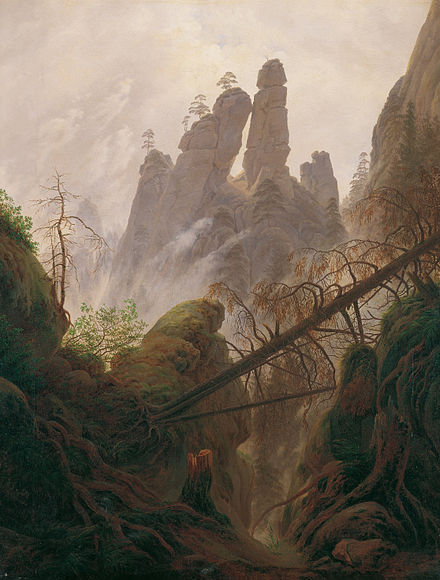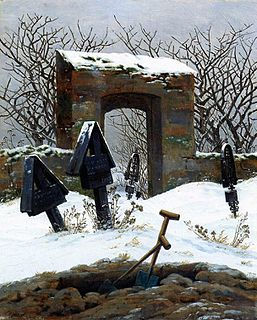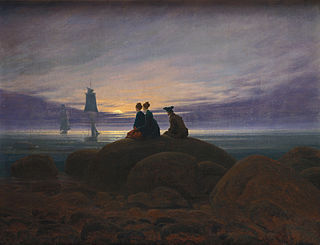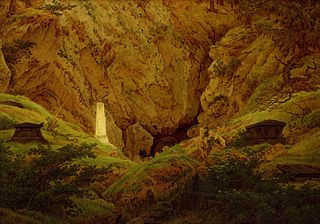Caspar David Friedrich.(Part 2)
- danicacardozo
- May 17, 2017
- 2 min read
WORKS

Rocky Landscape in the Elbe Sandstone Mountains

Graveyard under Snow (1826).
Friedrich sketched memorial monuments and sculptures for mausoleums, reflecting his obsession with death and the afterlife. He also created some of the funerary art in Dresden's cemeteries.

Moonrise Over the Sea (1822)
Alte Nationalgalerie, Berlin. During the early 1820s, human figures appear with increasing frequency in his paintings. Of this period, Linda Siegel writes, "the importance of human life, particularly his family, now occupies his thoughts more and more, and his friends appear as frequent subjects in his art."

Old Heroes' Graves, (1812)
Kunsthalle, Hamburg. A dilapidated monument inscribed "Arminius" invokes the Germanic chieftain, a symbol of nationalism, while the four tombs of fallen heroes are slightly ajar, freeing their spirits for eternity. Two French soldiers appear as small figures before a cave, lower and deep in a grotto surrounded by rock, as if farther from heaven.

The Oak Tree in the Snow 1829
Alte Nationalgalerie, Berlin. Friedrich was one of the first artists to portray winter landscapes as stark and dead. His winter scenes are solemn and still—according to the art historian Hermann Beenken, Friedrich painted winter scenes in which "no man has yet set his foot".

The Stages of Life 1835
Museum der Bildenden Künste, Leipzig. The Stages of Life is a meditation on the artist's own mortality, depicting five ships at various distances from the shore. The foreground similarly shows five figures at different stages of life.

The Giant Mountains (1830–35)
Alte Nationalgalerie, Berlin. Friedrich sought not just to explore the blissful enjoyment of a beautiful view, as in the classic conception, but rather to examine an instant of sublimity, a reunion with the spiritual self through the contemplation of nature.

Seashore by Moonlight (1835–36)
Kunsthalle, Hamburg. His final "black painting", Seashore by Moonlight, is described by William Vaughan as the "darkest of all his shorelines.

The Abbey in the Oakwood 1808
Alte Nationalgalerie, Berlin. Albert Boime writes, "Like a scene from a horror movie, it brings to bear on the subject all the Gothic clichés of the late eighteenth and early nineteenth centuries".

Man and Woman Contemplating the Moon (1830–35)
Alte Nationalgalerie, Berlin. A couple gaze longingly at nature. Dressed in "Old German" clothes, according to Robert Hughes they are "scarcely different in tone or modelling from the deep dramas of nature around them".




Comments